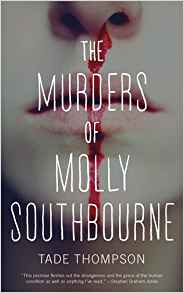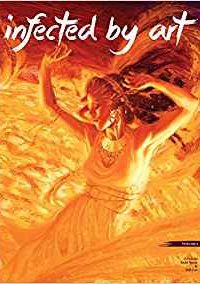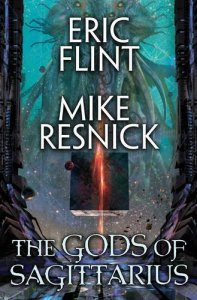John Langan Reviews The Murders of Molly Southbourne by Tade Thompson
 The Murders of Molly Southbourne, Tade Thompson (Tor.com 9780765397133 $11.99, 128pp, tp) October 2017.
The Murders of Molly Southbourne, Tade Thompson (Tor.com 9780765397133 $11.99, 128pp, tp) October 2017.
The figure of the doppelganger features in the work of a number of well-known writers, from Poe (“William Wilson”) to Dostoyevsky (The Double) to Dick (“The Father Thing”) to Ellison (“Shatterday”). In these narratives, and in the larger traditions from which they draw, the appearance of one’s double is a cause for anxiety. It is in the nature of the doppelganger to be drawn to its original, and that very proximity causes those surrounding them to mistake one for the other. As the doppelganger’s personality is distinct from the protagonist’s, and frequently its opposite, this disrupts the character’s life. In the conflict that arises, the two figures struggle over a single identity, typically with fatal results for one of them. It’s not hard to read the fears the double evokes as rooted in the threat to the unitary self. It may be a manifestation of supernatural judgment, a figure sent to amend the protagonist’s misdeeds. It may be a projection of repressed elements within the psyche, whether good or ill, its appearance the revelation of a consciousness split from itself. It may be a creature mimicking human form. The extent to which any of us might be successfully impersonated by someone who resembles us superficially, but is otherwise significantly different, jeopardizes our sense that our identity resides in some abstract, interior structure, whether personality or soul. Although not employed as often as its shambling cousin, the zombie, the doppelganger is a particularly apt monster for the contemporary moment, with its host of concerns about the nature of the self.
Tade Thompson’s The Murders of Molly Southbourne takes the conventions of the doppelganger and turns the settings up to eleven. For as long as she can remember, the titular character has lived with a set of commands from her parents. If she sees anyone who looks like her, she must flee them. If for any reason she bleeds, she must collect that blood, incinerate it, and thoroughly clean the place where her blood spilled. Of course, we know that she will fail to obey the rules, and when she does, we see the result. Molly’s blood produces copies of her, each the same age as she, and each intent on killing her. Her father and mother dispose of the first few, but they also begin training her in the deadly arts necessary to protect her from the fruit of her blood. As she undergoes instruction in topics including Systema, marksmanship, and the dismembering and disposal of a corpse, her surroundings come into clearer focus. She is living on a farm somewhere in Europe, probably England. Her father is a native of the country, her mother likely Russian. Her father’s skill set is compatible with his role as a farmer, but her mother’s suggests a history of covert employment. In addition to instruction in more exotic areas, Molly’s parents educate her in traditional subjects, and her experience swings between the mundane and the surreal, as despite her best efforts, occasional drops of blood go unnoticed, and she must engage in mortal combat against versions of herself grown increasingly fierce. The fact of the other Mollys lends an edge of uncertainty and danger to what otherwise would be such typical events as Molly, in a gesture of adolescent rebellion, running away to the big city. Her decision to attend university is likewise a problem, one she embraces, though not without several incidents of considerable violence. While at school, Molly begins working with a scientist on the faculty, to whom she reveals her condition and who assists her efforts to understand it. It will take a letter from her mother, however, to reveal the origin and nature of her affliction, in a move that slides the story into science fiction.
That said, this is science fiction in the lineage of Frankenstein (to which Thompson alludes). Molly is a descendant of Victor Frankenstein’s creature, the result of experiments with fundamental generative forces. She shares the creature’s impressive education, but benefits from the attention of a loving father and mother. Where the creature cannot reproduce without the intercession of Frankenstein, Molly cannot stop her unique form of reproduction – and both narratives conclude with ambiguous escapes. Thompson’s novella diverges from its ancestor most significantly in its acknowledgment of the larger political forces at work in the circumstances of Molly’s origin. He recognizes, too, that the story of the creation is almost always more interesting than the story of the creator.
In just over one hundred pages, Tade Thompson combines a new version of the doppelganger with thematic elements drawn from one of the foundational texts of modern fantastic fiction. It’s an impressive achievement. “Gnaw”, Thompson’s contribution to 2016’s Five Stories High, identified him as a writer to watch; The Murders of Molly Southbourne cements that.
John Langan is the author of two novels, The Fisherman (2016) and House of Windows (Night Shade 2009), and two collections of stories, The Wide Carnivorous Sky and Other Monstrous Geographies (2013) and Mr. Gaunt and Other Uneasy Encounters (2008). With Paul Tremblay, he co-edited Creatures: Thirty Years of Monsters (2011). One of the founders of the Shirley Jackson Awards, he served as a juror for its first three years. He lives in New York’s Mid-Hudson Valley with his wife and younger son.
This review and more like it in the January 2018 issue of Locus.







